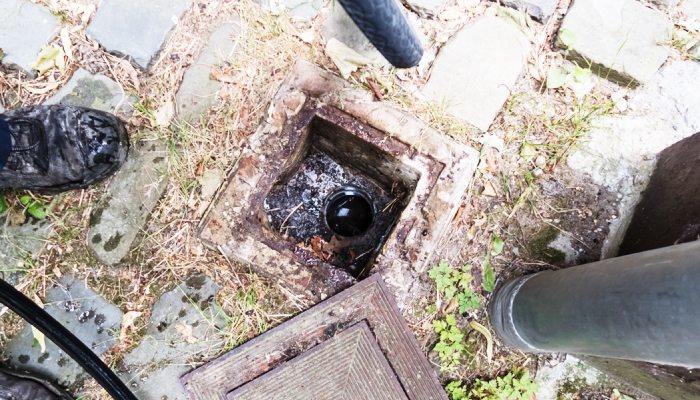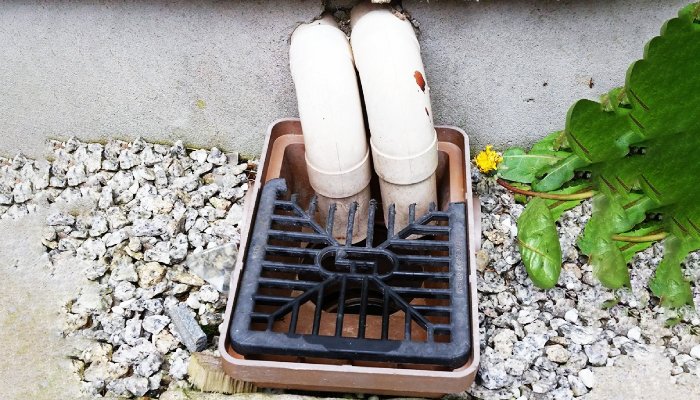Stepping outside your door becomes a game of chance, where the streets that are supposed to lead you safely to school, work, or back home turn into a maze filled with the unexpected twists and turns of overflowing sewage. This scenario might sound like something straight out of a grim, dystopian novel, but for millions of people around the globe, it’s just another day. The issue of inadequate sewage drainage, often lost in the shadow of flashier environmental crises, is a silent menace lurking in our midst, threatening our health, our ecosystems, and the very foundation of our communities.
There’s a jarring divide in our world between places boasting state-of-the-art wastewater treatment and those where sewage freely mixes with nature’s waterways, highlighting a stark inequality in access to health, opportunities, and basic human dignity. Diving into this problem, we start to see it’s more than just a challenge of infrastructure or environmental management; it’s a critical humanitarian emergency calling for our immediate and unwavering attention. This article aims to shed light on the profound impact inadequate sewage systems have on public health and the environment. It’s a plea for awareness and action on an issue that’s hiding in plain sight, yet affects us all deeply.

The Importance of Adequate Sewage Drainage
At its core, adequate sewage drainage is not just a convenience but a fundamental pillar of modern civilization. It’s what stands between us and the myriad of diseases that our ancestors battled before the advent of sanitation systems. Proper sewage management does more than just dispose of waste; it protects community health, preserves the quality of our water resources, and supports the biodiversity that our ecosystems so heavily rely on. Wastewater treatment plants play a crucial role in this process, ensuring that the water returned to nature is free from harmful pollutants and pathogens that can impact human health and the environment.
In urban areas, well-designed sewage systems are the unsung heroes of public health, quietly preventing the spread of pathogens and pollutants. These systems, coupled with improved sanitation facilities, are vital in safeguarding the health of urban populations. Conversely, in rural settings, where centralized sewage treatment may not be feasible, effective waste management practices are crucial for preventing contamination of groundwater and surface water, sources of drinking water for millions. The contrast between improved sanitation and poor sanitation can be stark, with direct implications for community health and environmental integrity.
Moreover, the importance of sewage drainage extends beyond health and environmental considerations. It plays a pivotal role in economic development and social well-being. Businesses thrive, tourism flourishes, and communities prosper in clean, healthy environments. Conversely, areas plagued by sewage problems often face economic stagnation and social challenges, as they struggle to attract investment and provide a quality of life that retains and attracts residents.
Understanding the critical role of sewage management, including the pivotal function of wastewater treatment plants and the sewer system, sets the stage for a discussion on the severe consequences of its neglect, not only for our health and the planet but for the very progress of human society. As we navigate through the complexities of this issue, it becomes clear that investing in adequate sewage drainage is not merely an infrastructure project; it’s an investment in our collective future.
Consequences of Inadequate Sewage Systems
The repercussions of inadequate sewage systems are far-reaching and multifaceted, affecting every aspect of human and environmental health. In areas where sewage management is overlooked or underfunded, the community faces a cascade of problems, each more severe than the last. One of the most immediate and visible consequences is the contamination of water bodies. Rivers, lakes, and coastal waters become dumping grounds for untreated human waste, turning these vital sources of water and life into vectors of disease and pollution. This not only devastates aquatic ecosystems but also compromises the water quality for drinking, agriculture, and recreation.
The environmental degradation caused by poor sewage management extends beyond water pollution. Soil contamination affects agricultural productivity and food safety, leading to a vicious cycle of poverty and malnutrition in affected communities. The overflow and runoff from inadequate sewage systems, lacking the necessary wastewater treatment plant infrastructure, can also contribute to algal blooms and dead zones in bodies of water, disrupting the balance of aquatic ecosystems and leading to a loss of biodiversity.
On a global scale, the consequences of inadequate sewage systems manifest in the form of increased greenhouse gas emissions. Methane, a potent greenhouse gas, is released from untreated sewage, contributing to climate change and exacerbating its impacts on vulnerable communities. The absence of an effective sewage system, coupled with a lack of improved water supply, magnifies the risks, spreading diseases and pollutants that could have been mitigated with proper waste management practices. The critical need for upgraded sewage infrastructure and wastewater treatment plants becomes evident as the environmental and health ramifications of inadequate systems unfold, highlighting the urgent need for investment in improved sanitation and water management solutions.

Public Health Implications
The public health implications of inadequate sewage drainage are profound and far-reaching, impacting human health at its core. Contaminated water supplies, a direct result of untreated sewage entering our waterways, serve as breeding grounds for pathogens, leading to the spread of waterborne diseases such as cholera, dysentery, typhoid, and hepatitis A. These diseases impose a significant health burden, especially in developing countries where access to clean water and proper sanitation services is scarce. The World Health Organization estimates that diseases linked to poor water, sanitation, and hygiene result in approximately 829,000 deaths annually, underscoring the critical nature of this crisis.
Children, in particular, are highly susceptible to the adverse health effects resulting from inadequate sewage systems. Diarrheal diseases, closely associated with water contamination, rank among the leading causes of illness and death in children under five. But the impact on public health goes beyond the immediate repercussions of infectious diseases. The infiltration of chemical pollutants, such as heavy metals and pesticides from untreated sewage, into our water supplies can precipitate long-term health complications, including cancer, developmental disorders, and reproductive issues.
Furthermore, the inadequacies of the sewer system and the consequent exposure to untreated sewage significantly deteriorate water quality, exacerbating the risk to human health. This situation places an immense strain on healthcare systems, diverting resources away from other vital areas and impeding efforts aimed at enhancing public health outcomes. The economic toll of treating waterborne diseases, coupled with the loss of productivity due to illness, perpetuates the cycle of poverty in affected communities, making it a pivotal issue that calls for urgent action.
Tackling the public health challenges posed by inadequate sewage systems demands a comprehensive strategy that includes investments in sewer system infrastructure, enhancements in water quality, public education initiatives, and policy reforms. By confronting this issue directly, communities can disrupt the cycle of disease and poverty, setting the stage for a healthier, more sustainable future.
Environmental Impact
The environmental toll of inadequate sewage systems extends far beyond the immediate vicinity of the discharge. Ecosystems, both local and global, bear the brunt of this negligence, with long-term consequences that are often irreversible. Water bodies contaminated with untreated sewage become dead zones, areas devoid of life, due to the depletion of oxygen caused by the decomposition of organic matter. This not only affects the aquatic species directly but also disrupts the food chain, impacting birds, animals, and humans that rely on these ecosystems for food and livelihood.
The contamination doesn’t stop at water. It seeps into the soil, affecting plant life and agriculture. Chemicals and heavy metals from industrial waste mix with household sewage, leading to soil degradation that can take decades to remediate. This contamination cycle affects not just the immediate environment but also contributes to broader issues like food security and climate change.
Biodiversity suffers immensely. Many species of fish and aquatic plants are sensitive to changes in water quality and can be decimated by the influx of sewage. The loss of these species can have cascading effects, leading to the destabilization of entire ecosystems. On a larger scale, the loss of biodiversity compromises the resilience of natural environments to climate change, reducing their ability to sequester carbon, regulate the climate, and protect against natural disasters.

Economic and Social Consequences
The economic repercussions of inadequate sewage systems are profound and multifaceted. At the community level, the cost of treating waterborne diseases places a significant burden on healthcare systems, diverting resources from other critical areas. The loss of productivity due to illness further exacerbates the economic downturn, creating a vicious cycle of poverty and disease.
Tourism, a major source of income for many communities, is particularly vulnerable to the impacts of sewage pollution. Pristine beaches, rivers, and lakes are the lifeblood of the tourism industry, and their contamination can lead to a dramatic decline in visitors, resulting in job losses and decreased income for local businesses.
The social consequences of inadequate sewage management extend beyond economic metrics. Communities plagued by sewage problems often suffer from social stigma and isolation, leading to a decline in social cohesion and an increase in inequality. The lack of access to clean water and sanitation facilities disproportionately affects marginalized groups, deepening existing disparities and hindering efforts towards social equity.
Moreover, the issue of inadequate sewage systems is often tied to broader governance and infrastructure challenges. Communities facing these issues are frequently caught in a cycle of neglect, where inadequate infrastructure investment leads to environmental degradation and public health crises, which in turn discourage further investment.
Breaking this cycle requires not just financial investment but a comprehensive approach that addresses the root causes of inadequate sewage management, including governance, education, and community engagement. By recognizing the economic and social consequences of this issue, societies can take meaningful steps towards sustainable solutions that enhance the well-being of all community members.
Solutions and Innovations
Addressing the challenge of inadequate sewage drainage demands a combination of innovative solutions, political will, and community engagement. One promising avenue is the development and deployment of sustainable sewage treatment technologies. These include decentralized wastewater treatment systems that can serve individual homes or communities, reducing the need for extensive sewage networks in areas where they are not feasible. Biofilters, constructed wetlands, and solar-powered sewage treatment plants are examples of green technologies that not only treat sewage effectively but also contribute to the restoration of ecosystems.
Another critical solution lies in improving infrastructure. This includes upgrading existing sewage systems to prevent leaks and overflows, as well as expanding access to sanitation facilities in underserved areas. Such infrastructure projects require significant investment but are essential for long-term health and environmental sustainability.
Policy reforms and education play a crucial role in tackling sewage management challenges. Implementing strict regulations on industrial discharges, encouraging water-efficient appliances, and promoting public awareness about the importance of proper waste disposal can significantly reduce the burden on sewage systems.
Community-based approaches are also vital. Engaging local communities in the planning, implementation, and maintenance of sewage management projects ensures that solutions are tailored to meet local needs and are more likely to be sustainable in the long term. Moreover, involving communities in decision-making processes fosters a sense of ownership and responsibility towards local environments.




